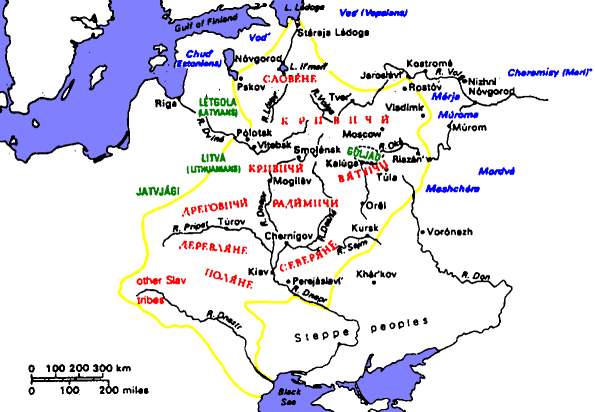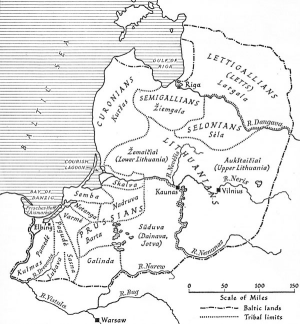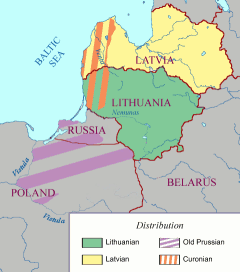Introduction

Languages AD 1000.
(Yellow = the area of continuous Slavic population
after early expansion.)
Baltic languages came early in contact with Slavic
languages and
many Baltic languages (tribes) were assimilated.
On the
map the following Baltic tribes are marked in green:
Latvians,
Lithuanians, Jatvagi (Yotvingian),
and Goljad (Galindian, Eastern).
The Baltic languages are a group of related languages belonging to the Indo-European language family and spoken mainly in areas extending east and southeast of the Baltic Sea in Northern Europe.
The name “Balts,” deriving from the Baltic Sea, Mare Balticum, is a neologism, used since 1845 as a general name for the people speaking “Baltic” languages — Old Prussian, Lithuanian, Lettish, Curonian?, Semigallian?, and Selian?.
History
The Eastern Baltic languages split from Western Baltic between 400 and 600. The differentiation between Lithuanian and Latvian -- the only living languages -- started after 800, with a long period of being one language but different dialects. At a minimum, transitional dialects existed until the 14th century or 15th century, and perhaps as late as the 17th century.
Old Prussian disappeared around 1700 due to German colonization of East Prussia. Curonian, Semigallian, and Selian disappeared between 1400 and 1600. These were either Lettonized or Lithuanized. Other eastern Baltic languages or dialects became extinct in the protohistoric or early historic period and are not preserved in written sources. Goljad (Galindian, Eastern), for instance, was totally surrounded by Slavic tribes and was assimilated.

Baltic tribes and languages AD 1200
Current Distribution

Current distribution of Baltic languages
External links
- Gimbutas, Marija: The Balts (gimbutas.pdf)
Language Family Tree
Indo-European > Classical Indo-European > Balto-Slavic > Eastern Baltic- [lav] Latvian
- [lit] Lithuanian